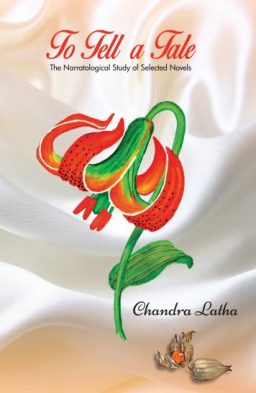
To tell a tale-23
(Chapter-4 Part-4)
-Chandra Latha
The Shattered Glass: The Tin Drum
Günter Grass
The Tin Drum is filled with religious overtones. Critics observe that The Tin Drum illustrates Seneca’s axiom, “The knowledge of sin is the beginning of salvation.” (Seneca, Consolations and Moral Letters. Latin Proverb) http://thinkexist.com/ quotation/ the_knowledge_of_sin_is_the_beginning_of/176801.html)
Grass depicts the sins of Nazism through Oskar’s recollections of the grotesque public and personal events that shaped his life and the lives of the people around him. Oskar’s rejection of adulthood and his drumming and screaming can be seen as metaphors of stunted development, immorality, and senseless destruction that illuminate some of the effects of Nazism. Finally, Grass examines German alienation in the post war era through Oskar’s aimless wanderings in Book Three. Grass’s pessimism about Germany’s future is reflected in the fact that although Oskar tries to cope with the changes wrought by Germany’s defeat and economic revival by returning to the old comforts of his drumming-he repeats the sins of the past with the murder-and morbid fascination with the dismembered appendage of Sister Dorothea.
There is lot of references to virgin Mary and Infant Jesus in the novel. At first Oskar identifies Jesus with Jan Broski and then himself with Infant Jesus. He finds Virgin Mary “had an expression just like his mother must have worn as a seventeen year old shop girl in Tryol when she had no money for movies ,but made up for it by glazing spell bound at posters of Asta Neilsen.” Oscar finds those two little boys, Jesus and John the Baptist, like any normal boys as himself or any little boy of that age who were about to sing the counting–rhyme “Eeny meeny miny mo…” (The Tin Drum, Pg. 141)
The infantile cherubic innocence takes the other way round. Oskar then identifies himself with Infant Jesus as his twin brother. He says, “I take a good look at Jesus and recognise my spit and image. He might have been my twin brother.” (The Tin Drum, Pg. 141) He puts his drum in Jesus lap and drumsticks in his hands.
That was Sacred Heart church, where his mother, Agnes, comes to confess and he finds many crosses but he recalls one particular one as the hooked cross which was in fact a swastika, the symbol of Nazis. Thus the role of the Christian Church under the Nazis is unveiled. Grass depicts a seminarian and ardent Nazi, Schugger who is able to reconcile his faith with Nazi ideology. And, the favourite of all, believers or non-believers the one whom Germans believed, Santa Clause, is visualised as the gas man, as a metaphor for Hitler himself, who was the designer of Holocaust and who put his own children in to the gas chambers until death locking them up in churches. An entire credulous nation believes, there’s faith for you, in Santa Claus. But Santa Claus is really the gasman, “He is coming .He is coming Who is coming ?The Christ Child? The saviour? Or is it the heavenly this world., without me you can’t cook.” (The Tin Drum, Pg. 203)
Grass narrates how Oskar becomes a saviour / Führer figure for a band of boy thieves during the war in explicit and ironic overtones because Führer is the title of Hitler declared by himself. Oskar, the Führer explains in detail, how the Satan lives in his sacred heart even after he is baptised and how Satan tempts him to use his power of breaking glasses to break the window glasses of church. Oscar invokes the Satan within him or Satan pops up where ever necessary: “I asked the Satan within me: ‘Did you get through it all right?’ (The Tin Drum, Pg. 137)
Satan jumped up and down and whispered: ‘Did you see those church windows? All glass, all glass!” (The Tin Drum, Pg. 137)
Although he exercises his power to smash glass with his cut –glass scream, he retains it for church windows. Soon, declares himself Jesus and becomes a leader of children’s gang, The dusters:
Oskar (of Jesus): “You bastard, I hate you, and all your hocus-pocus.”
Jesus: “Thou art Oskar, the rock, and on this rock I will build my Church. Follow thou me!” (The Tin Drum, Pg.358)
Jesus himself calls Oskar as the rock on which he will build his church. “Oskar was no cut out to be a follower of Christ: for one thing ,ha has no aptitude for disciples. Nevertheless Christ’s ‘follow thou me’ found it’s way indirectly circuitously, to my heart and I became his follower though I didn’t believe in him”
“I am Jesus,” He declares the Dusters and ultimately he becomes their leader. “Jesus will lead you. Follow him” They were caught in their attempt to see infant Jesus and John the Baptist at the Sacred heart church. They were caught and, “Oskar was carried away to a trial that still call the second trial of Jesus, a trial that ended with the acquittal of Oskar, hence also of Jesus.” (The Tin Drum, Pg. 381-82)
During post war period Oskar models for Madonna 49, and with his tin drum. Jesus the drummer boy, sits on the nude left thigh of the Madonna 49. (Pg.473) It brings Maria to Art exhibition, she sincerely watches buying her ticket, and very sincerely whips him down once he is home. His infatuation with virgin Mary , lingers deep into him, his references to his virgin mother, his mother’s infidelity, his jealousy on her lovers and his mother fixation are all mixed up and hang on him as deep Oedipus complex. He never hesitates to express his intimate feelings with mother like characters he encounters in the novel. His modeling as infant Jesus sitting on marble like naked thigh of Ulla is a typical example of his perceptions of mother-fixation.
Nuns portrayed artistically at Atlantic wall in vivid description reveal not only of the fraudulent few and the adultery but also the explosive expressions of the unusual suppressions of natural instincts of humans. The issue of anti-Semitism and Sundenbock or scapegoats is described in the same indifferent tone when Oskar describes his Tin Drum Toy-seller Markus’s shop smashed and burned like many synagogues burned across Germany and Markus ejection during Oskar’s mother’s funeral and later, Markus suicide.
Oskar expresses the contempt over the role of the church in unresisting of the rise of Hitler. Oskar shows his anger when he slaps the Child Christ near the statue of Virgin Mary and Infant Jesus in the church. Oskar slaps the Child Christ for not protesting. Oskar scornfully questions, “can’t you or won’t you?” (The Tin Drum Pg.143) Oskar refers Hitler, the gas man, as the father of Christmas, Santa clause that Germans believe.
As an allegory The Tin Drum, beginning from the Title to the end of the novel is a metaphor expressed in the form of a memoir. But Oskar is not simply writing his memoir but it is that of every German of his period. Oskar’s stunted growth and un-expanding worldview are in many ways an image of Nazi Germany itself, with its own drums and shrieks and avoidance of personal accountability. The novel rises the important issue of German relations with Poland. Oskar’s Tin Drum and it’s red and white colour is a metaphor for Poland’s flag. Drumming out is a metaphor for screaming out the truth. The dusters, the onion cellars, the pillbox concreted artistically buried live puppies, Rommels(12)’s asparagus, black witch, white bars of asylum and many such things are conspicuously symbolical of the real things and issues.
*****
(Contd..)

Chandra Latha, writer from Nellore won Telugu Association of North America award in 1997 for the novel “Regadi vittulu”. Her other novels are Vardhani(1995) and Vallu veellu paarijaataalu (2011). Her short fiction includes nearly 80 stories compiled in nenu nanna navutha (1996),Idam shareeram (2003) and vivarnam(2007). Her non-fiction are (Fish can fly!) ”vacche daretu(2010), itanala kadaku eeboothi boTlu(2010). And also published her blogposts in a book madata pejee(2010).
